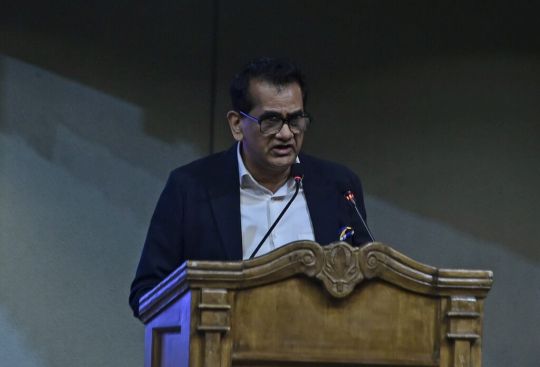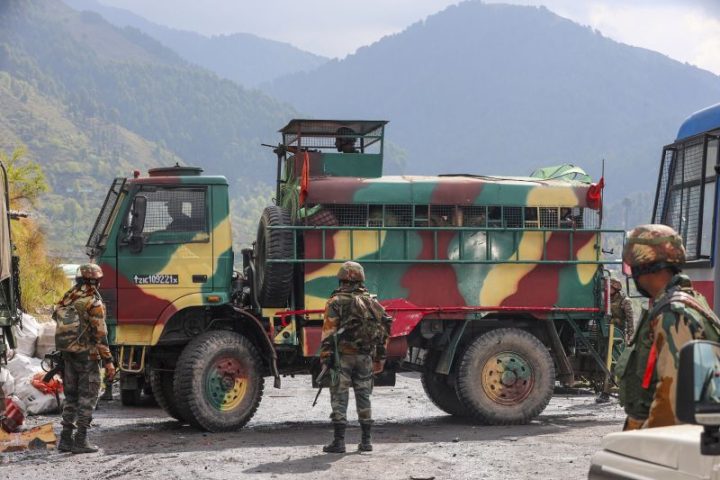By: Zahid Iqbal Sheikh
Jammu and Kashmir is renowned for its abundant natural resources, with water standing out as one of the most precious. This pristine resource not only sustains life but also serves as a powerful renewable energy source, driving the region’s development and illuminating its future.
Hydropower, a cornerstone of global energy, finds a promising home here. However, the search for ideal new project sites remains a global challenge, making the region’s hydropower potential even more precious and pivotal. The Union Territory of Jammu and Kashmir is one such place, with an estimated hydropower potential of 20,000 MW, of which approximately 16,475 MW have been identified. This includes 11,283 MW in the Chenab basin, 3,084 MW in the Jhelum basin, 500 MW in the Ravi basin, and 1,608 MW in the Indus basin.
The Jhelum river, referred to as Vyeth in Kashmiri, serves as the vital source of sustenance for the Kashmir Valley. The source of this river is the picturesque Verinag spring, located at the foothills of the PirPanjal mountain range. At Khanabal, it is accompanied by various tributaries, converting it into a navigable watercourse from Khanabal to Wullar Lake. This river has the total length of 725km and it is the tributary of the Chenab River. It is one among the five tributaries of Indus river system.
The Jhelum River meanders through the valley, covering a distance of 177 kilometres, before finally reaching Wullar Lake. Emerging from the lake on the other shore, it continues on its path towards Baramulla, eventually crossing into Pakistan. Nevertheless, this particular stretch of the river is impassable for navigation owing to its deep channel and quick stream, but suitable for production of Hydroelectricity.
Jhelum basin which is the source of many Hydel power projects in Kashmir valley including the first power Project of Jammu and Kashmir-Mohra Power Project (now defunct), Lower Jhelum Power Project (LJHP), Uri I and Uri II. Among them LJHP which is approximately 20 Kilometres from district headquarters of Baramulla located in the village of Warikah and its construction started in 1978-79. As per the statement of my respondent Ali Mohammad Bhat of Ijara, who himself has worked in this project recalls “thousands of labourers working in this project lost their lives. Labourers were both locals as well as the outsiders. But most of them were outsiders.” He recalls that the “thousands of Kanals of cultivable land was lost due to this project.” The villages of Zehanpora, Chakla, Peerniya, Ijara, Bimyar, warikah and Chahla lost their agricultural land in this project.
Govt. of India chose Bharat Heavy Electricals Limited, Bhopal to supply the turbines for the hydro power project. They provided three Francis turbines, each with a capacity of 35 MW. The power plant is fully operational with three robust units, each meticulously commissioned to deliver an impressive 35 Megawatts of energy. These units work in harmony, channelling their combined strength to generate a significant and steady stream of electricity, driving progress and illuminating countless lives. This Project has the installed capacity of 105 MW. The amount of electricity that can be generated depends on the volume of water flow and the change in elevation.
As per the official Facebook page of Lower Jhelum HEP, Power House generates “90 MW in peak hours daily in the month of November.” This power project is managed by the Union Territory and is overseen by the Jammu and Kashmir State Power Development Corporation Limited (JKSPDCL). The power plant’s energy has benefited the regions of Jammu and Kashmir, Punjab, and Himachal Pradesh, lighting up homes and powering industries across these states and union territories.
Barrage at Gantamulla Colony And Dam at Panzalmullah
Power House at Warikah
Nestled in the breathtaking landscape of the PirPanjal range, this power project has blossomed into a beloved tourist destination. This power Project is a run-of-river project, with water diverted to a canal at the Gantamulla Colony. This canal, stretching approximately 7kilometres along the Jhelum River, has become a favourite destination for visitors. Particularly captivating is the dam at Panzalmula, located just over three kilometres from the powerhouse. The lush greenery surrounding the dam and the scenic banks of the Jhelum provide a mesmerizing view that enchants all who visit. People from near and far come to bask in the soothing evening breeze, drawn to this picturesque haven.
While the canal and dam of the project offer a serene escape for visitors, they have also been the site of numerous tragic accidents, claiming the lives of hundreds due to the lack of fencing. In response to these consistent incidents of drowning, the government began fencing the dam and canal a few years ago.
However, their efforts have only extended from the powerhouse to the dam. There is a pressing need for the authorities to extend this safety measure along the entire 7-kilometer stretch from Wairkah to Gantamulla colony, to ensure the safety of the local populace as well as all who visit this beautiful place.
The writer is Research Scholar, Department of History, Maulana Azad National Urdu University, Hyderabad. [email protected]

Kashmir Images is an English language daily newspaper published from Srinagar (J&K), India. The newspaper is one of the largest circulated English dailies of Kashmir and its hard copies reach every nook and corner of Kashmir Valley besides Jammu and Ladakh region.
















